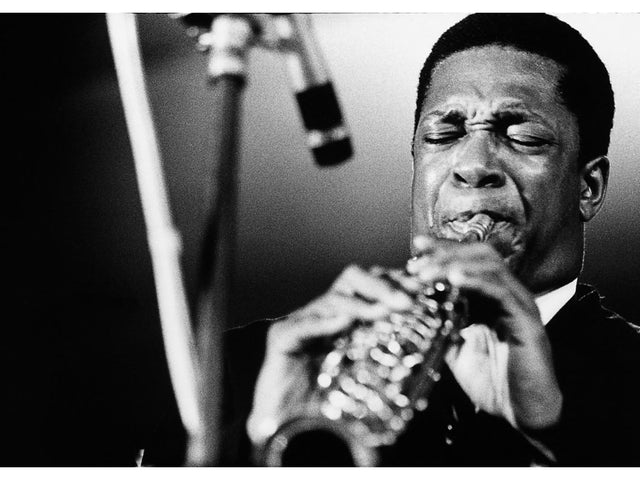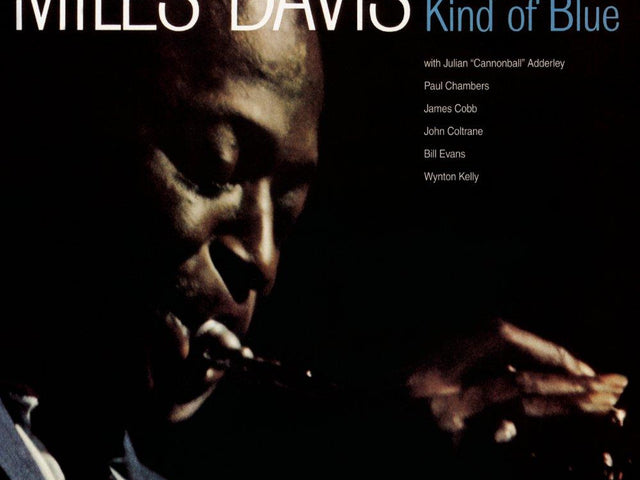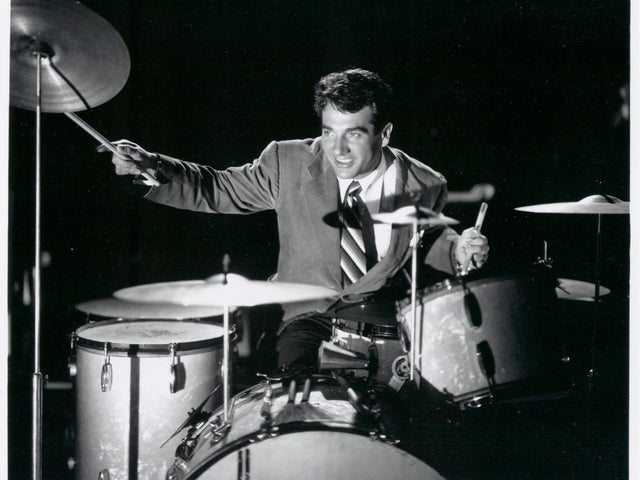In June 2018, Louis Prima had a hit single — setting a record for the longest break from the charts in the process. His last previous hit was “Wonderland By Night,” in February 1961, 57 years earlier. He hadn’t made a new record, of course — Prima died in 1978. But Kanye West sampled his 1936 song “What Will Santa Claus Say (When He Finds Everybody Swingin’)” for “4th Dimension,” a track from his collaborative album with KiD CuDi, Kids See Ghosts, and Prima was credited as a featured artist.
The thing is, even without this bit of chart gimmickry, Louis Prima would already have had a remarkably long and impressive career. Born in New Orleans in 1910, he formed his first band as a teenager, and made his first recordings, under the name Louis Prima and His New Orleans Gang, in 1934. That band featured legendary clarinetist Pee Wee Russell and played a combination of Dixieland and swing; they had a national hit with “The Lady In Red.” In 1936, Prima wrote and recorded “Sing, Sing, Sing,” which would become one of his signature pieces and a popular piece of repertoire for many other artists throughout the swing and big band eras, most notably Benny Goodman.
He continued working throughout the 1940s, expanding his group to a big band and becoming a headliner. Prima’s style was wild and raucous, combining jazz and blues with Italian love songs and ridiculous novelty numbers like “Please No Squeeza Da Banana” and “Felicia No Capicia.” But while his thick accent and wise-fool, skirt-chaser persona might have made some listeners see him as a clown, his trumpet skills were no laughing matter. Prima blew red-hot solos over a hard-swinging rhythm section; like his singing and onstage demeanor, his instrumental voice was about keeping the audience in the palm of his hand from beginning to end.
By the early 1950s, though, Prima’s career was on the downward slide. An inveterate gambler and philanderer, he was paying alimony to three ex-wives and regularly hitting the track. He was in dire financial straits. But that was about to change.
In 1954, he took a desperation gig playing the lounge — the smaller of the club’s two rooms — at the Sahara casino in Las Vegas. It was rough; they did five shows a night, starting at midnight and ending just before 6 a.m. His act featured hard-charging saxophonist Sam Butera as a sort of hype man, leading a rocking jazz and jump blues band featuring James Blount Jr. on trombone, Willie McCumber on piano, Jack Marshall on guitar, Amato Rodrigues on bass and Bobby Morris on drums. Butera assembled the band so quickly, it had no name until opening night. When Prima asked — on stage — what the group was called, he quickly responded “the Witnesses,” and the name stuck. Between Prima’s high-flying trumpet, Butera’s blaring sax, Blount’s gutsy trombone and the rhythm section’s hard-charging, bluesy swing, this was music guaranteed to get a drunk, rowdy casino crowd on its feet.
The third point of the triangle was possibly the most important, though. Singer Keely Smith was the perfect foil for the wisecracking, stage-dominating Prima and Butera. A slim, sharp-featured young woman with big eyes and strikingly short bangs, she stood perfectly still by the piano when she wasn’t singing, frequently rolling her eyes at her bandmates’ antics but never allowing herself to be drawn into the chaos. She was 27, Prima was 45, and she was his fourth wife. (She’d divorce him in 1961; he’d ultimately be married five times, and have six children — five daughters and a son.)
Prima signed with Capitol Records, and as the act became more and more popular, he recorded a string of albums, many of them live and featuring his goofy, ribald banter and kitschy paisano persona alongside slamming tunes that blurred the lines between jump blues, New Orleans jazz and rock ’n’ roll. He repurposed songs he’d recorded years earlier like “Sing, Sing, Sing”; delivered over-the-top interpretations of jazz standards like “That Old Black Magic” and “I’ve Got You Under My Skin”; and let Butera take the microphone on the grinding blues of “There’ll Be No Next Time.” Perhaps Prima’s best-known song from this era, though, was the medley of “Just A Gigolo” and “I Ain’t Got Nobody” that opened his first Capitol studio album, The Wildest! (punctuation in original). It was a big hit then, and again 30 years later, when David Lee Roth made his debut outside the confines of Van Halen with a dead-on re-recording of Butera’s arrangement. The Wildest! also included “Jump, Jive An’ Wail,” which the Brian Setzer Orchestra re-recorded in 1998 for a Gap commercial. (In 2000, Butera told the Las Vegas Sun, “One night [Roth] came to see me at the Tropicana where I was working. He and three other people were sitting on my left, and after the show he came backstage and said ‘Hi, Sam.’ I said, ‘Who are you?’ He said, ‘I’m David Lee Roth.’ You know what I told him? ‘Give me my money.’ He turned around and walked out. The Gap people? I got nothing for that. I might have got three to four hundred dollars, oh, and they sent me a coupon to go to the store to get three pair of pants.”)
Prima’s subsequent Capitol studio albums The Call Of The Wildest and Strictly Prima maintained the same energy as his label debut. The whole revue would race from Vegas to Hollywood for a day or two, usually on a Thursday for some reason, blast through a session, then head right back to work. The live albums — Las Vegas Prima Style, The Wildest Show At Tahoe, Lake Tahoe Prima Style — were recorded late at night, when both the band and the audience were likely to be primed for wild abandon; a Capitol engineer, Jay Ranelucci, recalled, “We set up the equipment after the 2:30 a.m. show, next to the dumpster in the kitchen. The smell was awful.” The repertoire would jump back and forth between ballads (on which Smith would sing the lyrics straight, and Prima would deliver his lines in a kind of primeval jabber) and red-hot instrumentals that blended wailing New Orleans jazz and frenzied bebop.
Prima’s 1950s and early 1960s recordings represented a remarkable comeback for a guy who’d been on the skids, professionally, at the beginning of the decade. He had a combination of raw musical talent, vulgar charisma, and an astonishing backing band — not to mention Keely Smith, whose stoicism, perfectly timed eye-rolls, and occasional full-on mockery of her husband and his buddies offered the ideal counterpoint to his huffing and puffing. At a time when rock ’n’ roll was ascendant, a man in his late forties was making some of the wildest, most over-the-top music around. And these records retain every bit of their charm and galvanic energy today.
Phil Freeman is a freelance writer whose work appears regularly in/on Bandcamp Daily, Down Beat, Stereogum, the Village Voice, The Wire and many other newspapers, magazines and websites. He runs the arts and culture site Burning Ambulance and hosts the Burning Ambulance podcast, featuring interviews with jazz musicians.










